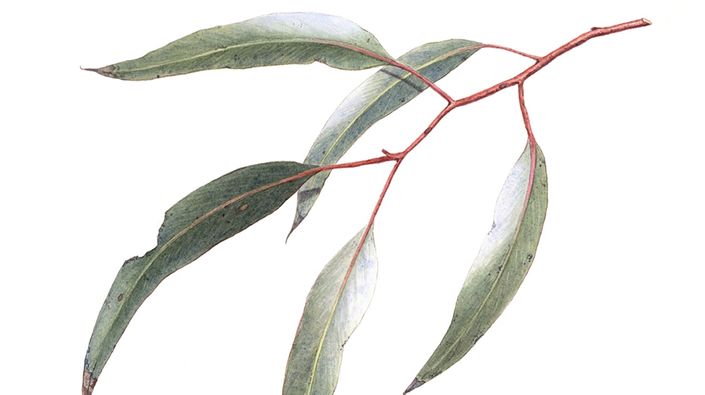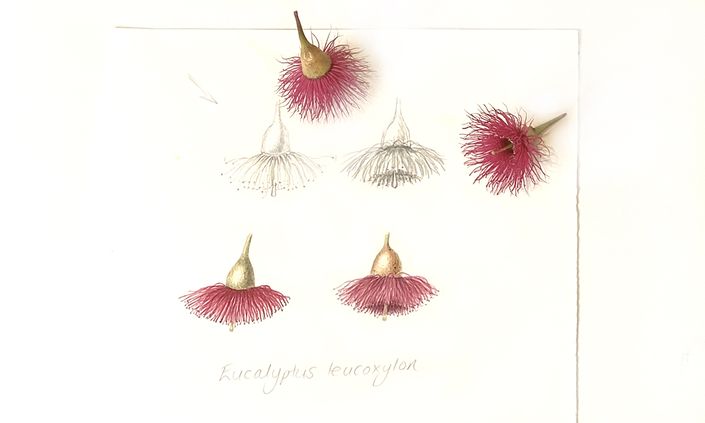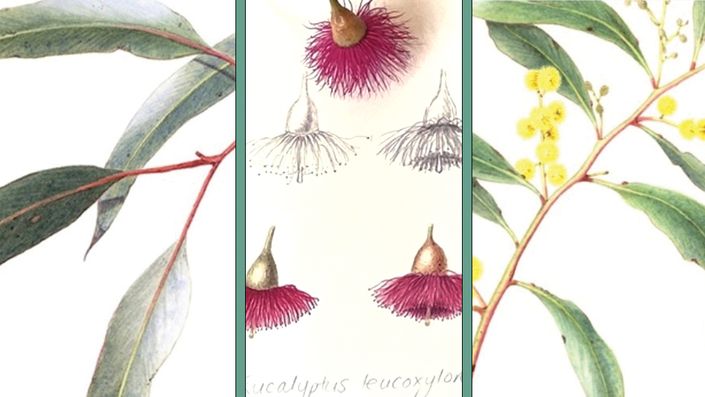About this course
The wattle grows in many parts of the world, and their beautiful golden blossoms are an inspiration for the botanical artist. But where do you start? They are a complex flower, and how do you keep the yellow fresh and clean looking?
I teach botanical and insect illustration, and have produced another tutorial title “Introduction to Botanical Art – Eucalyptus Leaves”. This tutorial can be completed on its own, or following the previous tutorial.
Through my teaching I've learnt the problems that you might come up against when you first start out with watercolour. I will walk you through the whole process from beginning to end. We will start with some sketch or study pages, looking at each element of the plant in detail, and drawing and painting individual elements, so different stages of the wattle flowers, and the leaves, on a small sheet of watercolour paper. We'll cover basic equipment required, setting up your specimen, sketching, tonal study, transferring the image to your watercolour paper, and then we move on to painting a large specimen in watercolour. We'll cover the techniques of wet in wet, then building up the colours and textures in layers and then using dry brush to add those final details at the end. For this section I have filmed and narrated me painting a whole specimen, working around the painting in a methodical fashion, to end up with a completed artwork ready for framing.
This Acacia pycnantha, or Golden Wattle is the floral emblem of Australia, and a very popular plant which is really rewarding to paint in watercolour. It's very satisfying getting those flowers to look plump and round and fluffy, and the leaves (or phyllodes as you'll learn) are shiny and bright, with just enough detail to keep things interesting. Although it's always best to have a live specimen, in this case you don't need one, as there is enough information in the handouts - my sketch and photographs of the plants - for you to get on with painting.
The skills you learn in this tutorial can be applied to many other subjects, especially plants. So come and join me, and gain the confidence to tackle more botanical subjects.
A few words from your instructor: Cheryl Hodges
Example Curriculum
- Painting the flowers (37:50)
- Painting the buds (12:58)
- Painting stems of flower stalks (14:34)
- Looking at tone, sketching in preparation for painting (4:23)
- Painting leaves - wet-in-wet - highlights (16:09)
- Painting leaves - wet-in-wet - shadows (7:23)
- Painting leaves - wet on dry - shadows (2:33)
- Painting leaves - wet-in-wet - light green (9:44)
- Painting leaves - wet-in-wet - dark green (16:46)
- Painting leaves - wet on dry (3:47)
- Painting leaves - painting midrib (5:19)
- Observing a leaf (0:39)
- Individual leaves - bottom right (10:14)
- Individual Leaves - second from bottom right (11:55)
- Individual leaves - middle right (12:58)
- Individual leaves - top two left (11:05)
- Individual leaves - fourth from top left, plus other touch ups (12:04)
- Individual leaves - third from top left, working around highlight (11:08)
- Individual leaves - second from bottom left, in shadow (4:39)
- Individual leaves - slightly tricky leaf with strong highlight (25:02)
- Individual leaves - tricky leaf with twists and turns - detailed tonal sketch (3:34)
- Individual leaves - tricky leaf with twists and turns - painting (16:20)
- Stem (14:41)
- Details - joins, pulvinus, glands on leaves (phyllodes) (13:56)
- Overview of painting, touching up where required (15:22)
- Final details - imperfections and dark edges (22:46)
Your instructor
Cheryl Hodges
Cheryl is a natural history artist, painting plants and insects in watercolour, on paper and vellum. She particularly enjoys painting Australian native plants and insects, and more recently has been focusing on threatened and endangered species. Cheryl teaches both botanical and insect illustration. She hopes that through her painting and teaching, she will encourage people to look at the natural world with curiosity and fascination and therefore be more inclined to look after it.
Cheryl has won numerous awards and her works are held in public and private collections in Australia and overseas. Cheryl has held two solo exhibitions. Cheryl has paintings in the permanent collections of the Florilegium of the Royal Botanic Gardens Sydney, the CSIRO in Canberra, and the Florilegium of the Royal Botanic Gardens Edinburgh.





